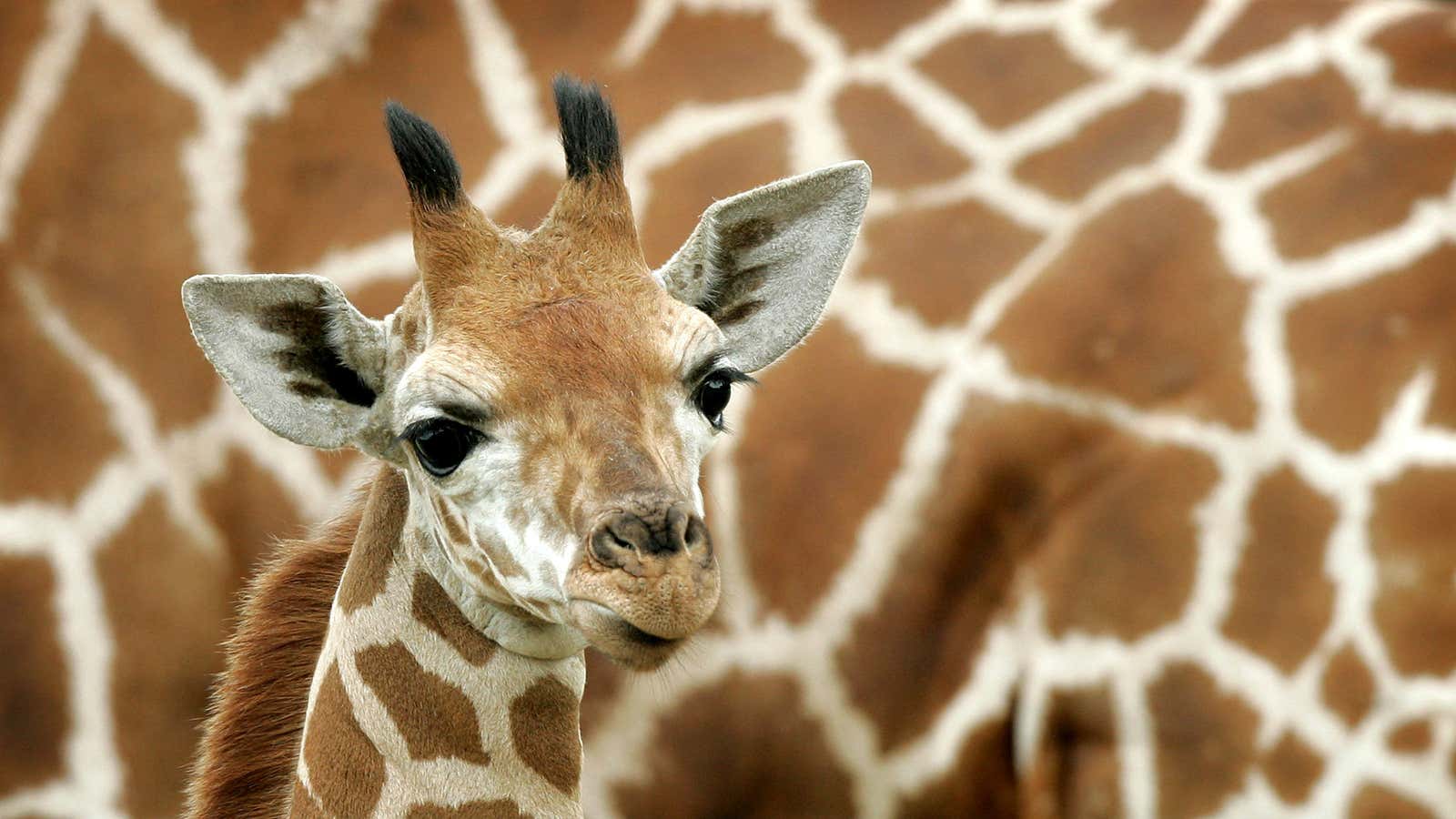Picture the giraffe: the elegant neck, the graceful legs, the lovely yellow-gold coat splotched with brown. For years, zoologists thought this giant African mammal was one of a kind—until genetics proved there were actually four distinct types that don’t interbreed.
On Thursday (Sept. 8), researchers from the Giraffe Conservation Foundation in Namibia and the Goethe University in Germany published work that showed the Giraffa genus contains four different species. Though the distinctions between the species are subtle, the new classifications will help conservationists determine which populations are healthy in number, and which may need to be protected by the International Union for Conservation of Nature (IUCN).
Giraffe have a wide range of habitat across Africa, roaming land in countries including Niger, Kenya, Tanzania, South Africa, South Sudan, and Ethiopia. Previously, scientists classified giraffes as all one species, Giraffa camelopardalis, with nine distinct subspecies living in isolation from and not reproducing with one another in the wild. After analyzing genes from skin samples of 190 wild giraffe across the animals’ habitats, the research team discovered that giraffe can actually be separated into four distinct species: the reticulated giraffe (Giraffa ritulata), the Masai giraffe (Giraffa tippelskirchi), the northern giraffe (Giraffa camelopardalis), and the southern giraffe (Giraffa giraffa), the latter two of which have two and three subspecies, respectively.
The researchers defined a distinct species as “members of populations that actually or potentially interbreed in nature,” says Axel Janke, a geneticist from Goethe University and co-author of the paper. Janke noted that technically, they could reproduce if they were kept together in captivity, much like grizzly and polar bears can when their habitat converges.
These species, which likely evolved from a single ancestor some two million years ago, are difficult to tell apart. The physical distinctions are slight, but noticeable: the Masai giraffe, for example, is darker than the others, and the reticulated giraffe has white streaks down its legs. The researchers also note that each species seem to prefer the same kinds of habitat, and that some of them even live the same areas in the wild.
The distinction is important for conservation, though. Currently, the IUCN classifies the giraffe as a species of “least concern,” with close to 90,000 individual animals, meaning it is not in danger of extinction (although two of the previously recognized subspecies were listed as “endangered”). However, the newly identified species of giraffe have drastically different population numbers. The researchers estimate that the northern giraffe has a population around 4,750 and the reticulated giraffe has around 8,700—both of which are extremely low. The southern giraffe has about 44,500 members. “With now four distinct species, the conservation status of each of these can be better defined and in turn added to the IUCN Red List,” Julian Fennessy, a biologist with the Giraffe Conservation Foundation and co-author of the paper, said in a press release.
